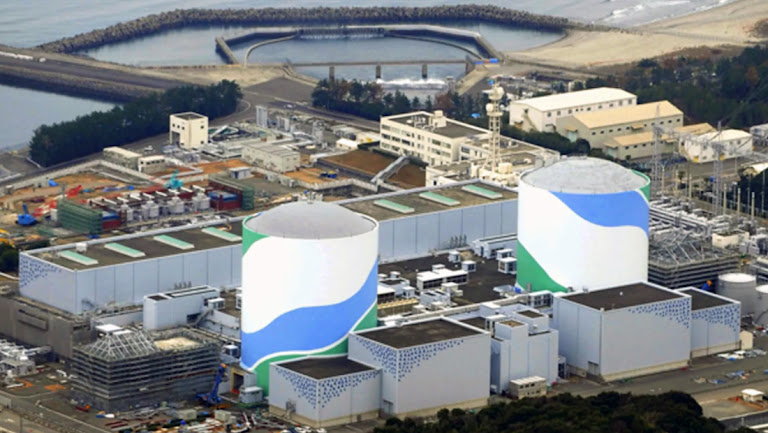Editorial: The government's nuclear power state of emergency declared on the day of the Fukushima nuclear accident on March 11, 2011, has yet to be abolished. After the magnitude-9.0 Great East Japan Earthquake and tsunami that followed, the nation is still reeling from the terrible destruction of Tokyo Electric Power Co.'s Fukushima No. 1 nuclear power plant.
Another nuclear disaster would endanger the island nation's very existence. Moreover, no solution to the enormous problem of how to dispose of highly radioactive nuclear waste appears to be in the future.
Despite this, there are increasing efforts to boost nuclear energy use as part of global climate change policy. Without relying on nuclear power, it is conceivable to lessen the country's carbon footprint. A return to nuclear power, fueled by images of clean energy generated by nuclear power, could pose major future concerns. Japan must renew its commitment to weaning itself off nuclear power as memories of the Fukushima tragedy fade.
An absence of debate.
The year before, the government set a climate policy target of reducing greenhouse gas emissions by 46% from fiscal 2013 levels by fiscal 2030. A longer-term target of carbon neutrality, or net-zero carbon dioxide emissions, by 2050 has been established. In addition, the government updated its Basic Energy Plan. However, these actions have not sparked a serious discussion about the future of nuclear power generation. The main plan asks for increasing the use of renewable energy as much as possible while reducing the state's dependency on nuclear power as much as possible. However, there are few indicators that the government is serious about solving this policy issue.
Meanwhile, several politicians and corporate executives have urged the restart of idled nuclear reactors, citing policy imperatives such as carbon reduction, stable power supply, and energy self-sufficiency as justifications. The European Union's decision to consider nuclear energy as a means of reducing global warming under specific conditions boosted the case for increasing nuclear power development.
Prime Minister Fumio Kishida's new "clean energy" policy is expected to include steps to boost research into tiny modular reactors and nuclear fusion technologies.
Although trying to raise expectations for yet-to-be-developed technologies, the government has failed to respond to a contentious proposal from the nuclear industry to extend the role of nuclear energy by building new reactors and expanding or upgrading current facilities. Without going through a legitimate process of gaining public approval, the government should not be allowed to gradually return to growing nuclear power generation. After providing specific and extensive information regarding the benefits and hazards of nuclear power generation, as well as outlining the government's stance, the procedure asks for public input.
Nuclear power plants do not release CO2 while generating electricity, according to proponents, and light-water reactor technology is well-established. However, the same argument can be made for renewable energy sources including solar, wind, hydro, and geothermal power. These energy sources provide electricity without producing CO2 and are based on well-proven technology.
Renewable energy has a huge potential.
 |
| Japan's nuclear regulator confirms the plant's safety for the first time. Image Credit |
According to some analysts, Japan's photovoltaic power generation capacity per unit area of flat land is already among the highest in the world. They also point out that Japan lacks shallow coastal waters that are appropriate for offshore wind energy development.
However, according to the Environment Ministry, renewable power generation has the potential to deliver as much as quadruple Japan's yearly power supply if economically viable facilities are built-in suitable places. Without nuclear power, the Renewable Energy Institute and environmentalist groups have independently determined that the government's climate policy target for fiscal 2030 can be met without nuclear power and that carbon neutrality can be achieved in 2050 without nuclear or thermal power generation.
The potential for renewable energy is significant.
Consider the case of solar electricity. In Japan, around 10% of detached homes have solar panels installed. According to Hiroshi Segawa, a professor of energy and environment at the University of Tokyo, if this ratio is increased to 20%, 13 gigawatts of more power will be generated. Converting half of the country's abandoned farmland into solar farms would contribute 95 gigawatts of power, equivalent to dozens of 1-gigawatt nuclear reactors.
The government should reject its unrealistic Basic Energy Plan, which asks for nuclear power to account for 20-22 % power generation in fiscal 2030. To meet the aim, the number of reactors in operation will have to be dramatically increased.
The conventional notion that nuclear power is cost-effective has also lost credibility. According to industry ministry predictions, power generating prices in 2030 will be in the 8-yen (6.7 US cents) to the upper 11-yen range for solar power for companies and the upper 11-yen range or more for nuclear power.
In 2030, offshore wind power generation is expected to cost around 26 yen. However, the price can fall. A group of firms led by trading giant Mitsubishi Corp., which manages many offshore wind farms worldwide, won a bidding war for contracts to operate wind power facilities off the coasts of Akita and Chiba's prefectures held at the end of last year. The group won the competition by offering to sell electricity generated at these facilities to electric utilities for 11.99 yen to 16.49 yen per kilowatt-hour.
If Japan does not move rapidly to develop renewable energy technology and increase operational efficiency, it will fall behind in the global race toward a cleaner energy future.
Not to be forgotten is the 3/11 aftermath.
 |
| Despite Fukushima, Japan restarts another nuclear reactor. Image Credit: Getty |
Although solar and wind power generation is affected by weather, the problem can be solved by utilizing power storage facilities and enhancing the power grid's operation. Japan has the most patents related to renewable energy technologies in the world. It is past time for Japan to tap into this pool of intellectual capital in order to boost the economy.
Through talks with local inhabitants, a framework has been devised to allow municipal governments to extend the usage of renewable energy within local communities. The Environment Ministry ordered a reassessment of the environmental impact of a number of plans to build massive solar farms because this approach necessitates paying close attention to the impact of disaster preparedness strategies as well as geographical features and eco-systems within the targeted communities. It has also taken a hard line on measures that could raise the chance of a disaster.
Renewable energy is also useful in terms of alternative energy and disaster protection. Renewable energies are energy sources that are totally generated at home. Power generated by such dispersed energy sources might be stored within communities as insurance against grid or power plant outages caused by natural disasters.
It's also important to note the government's nuclear fuel recycling program's failure. Given the government's decision to cancel the Monju prototype fast-breeder reactor program, the program is clearly bankrupt.
The very first part of the process, known as "bunken chosa" (literature survey), is currently underway to analyze two Hokkaido municipalities for their readiness to host a final disposal facility for high-level radioactive waste from nuclear power stations. However, no decision on a potential disposal site is expected in the near future. It's a tall task to confirm the massively long-term safety of deep geological disposal of high-level radioactive waste in Japan, a country prone to earthquakes and volcanic eruptions.
Since the March 11 catastrophe, Asahi Shimbun editorials have called for a rapid transition to a society free of nuclear power, emphasizing the need for phased nuclear power generation.
There is no reason for us to modify our minds on this issue. The Russian invasion of Ukraine has once again highlighted the dangers of operating nuclear power plants. Serious nuclear accidents endanger a country's survival, and there is no failsafe way to avoid a disaster.
We must not forget that only a few years ago, even those living far away from Fukushima were carefully monitoring radiation levels on a daily basis.
Source: The Asahi Shimbun published an article, on March 22.










0 Comments
please do not enter any spam link in the comment box